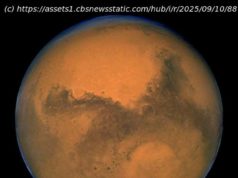Only a fraction of the population will see a full eclipse on August 21. Use this map app to figure out if you’re one of them.
By Jon Schleuss, L.A. Times
August 18,2017,1: 12 PM
Most Americans won’ t see this year’s total solar eclipse, the first in the Lower 48 states since 1979.
But a partial eclipse will be visible in every state on Aug. 21. Just don’ t look directly at it without eye protection specifically designed to do so.
The countdown has begun. Based on the time zone of the device you’ re using to read this, the eclipse will start in:
The farther east you are, the later it will start.
If you can find a way to see the total eclipse, you certainly should.
“I’ ve seen enough to know why you keep going to see them, ” said E. C. Krupp, the director of Griffith Observatory, who has seen 14 total solar eclipses.
“It is one of the most remarkable and singular phenomenons you will ever see, ” said Krupp, who plans to travel to Wyoming for the event.
A solar eclipse occurs when the moon blocks the path of the sun’s rays to Earth. A total eclipse is possible because of a coincidence of size and distance.
The sun is 400 times wider than the moon, and 400 times farther away from Earth than the moon. As a result, from our vantage point on the ground, during a total eclipse they appear to be the same size in the sky, so the moon covers the sun completely. (During an annular eclipse, the moon is too far away from Earth, and therefore too small, to completely cover the sun, revealing a “ring of fire, ” or annulus, around the moon.)
When the heavenly bodies line up just right, as will happen in August, a total eclipse occurs, plunging broad swaths of land or sea into darkness. The phenomenon occurs somewhere on Earth about every 12 to 18 months, according to NASA.
Your solar eclipse checklist: What to look for on the big day
Americans in the continental U. S. (weather permitting) will experience at least a partial solar eclipse, or penumbra, when the edges of the moon’s shadow fall across Earth. The sun will still be bright, but the moon will eat a chunk out of it.
On the morning of Aug. 21, Los Angeles will see the moon begin to edge into the disk of sun.
“At about 9: 05 a.m. there will be the first little sort of a bite — a tiny little nibble — taken out of the top of the sun, ” Krupp said.
The shadow from the total eclipse will strike the Oregon coast at 10: 15 a.m., moving at about 1,600 mph, and will travel southeast for about 2,500 miles.
The duration of the eclipse will vary. It’ ll be longest just south of St. Louis, in the center of the path of totality. There, the darkness will last 2 minutes and 40 seconds.
Finally, it’ ll move to Charleston, S. C., beginning at 2: 46 p.m. local time before heading out to the Atlantic Ocean 2 minutes later.
NASA made a video to show what different parts of the country will see during the eclipse.
Why not? Well, you could damage your eyes. Because the sun produces UV radiation, looking at it exposes your eyes to a sunburn, potentially damaging the cornea and retina.
Krupp said you could look if you were in the path of a total eclipse and only during totality, when the moon is completely covering the sun.
You can pick up a set of eclipse glasses for just a few bucks at Griffith Observatory or online. “I strongly urge people that they should get them from a bonafide source” and not just from sellers on the street, Krupp said.
You can also make your own pinhole viewer. NASA’s Jet Propulsion Laboratory made a guide for how to make one, using thick paper and aluminum foil. Using this homemade camera, you’ ll see the event projected through the tiny hole.






